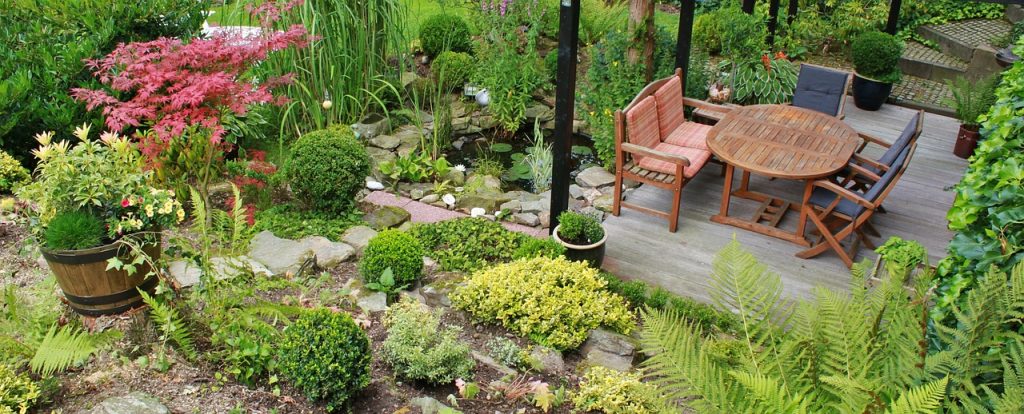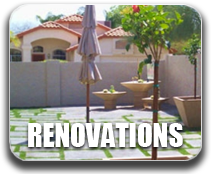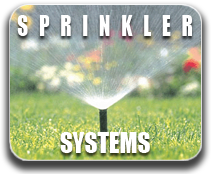Garden Design Tips: Creating a Beautiful and Functional Outdoor Space
January 20, 2025When you set out to design your garden, it’s crucial to balance visual appeal with functional needs. You’ll want to choose plants not only for their beauty but also for their compatibility with your local climate. Think about how you’ll move through your garden; well-planned paths can significantly enhance accessibility and enjoyment. But here’s something to keep in mind—how do these elements come together to create not just a garden, but a seasonally evolving landscape that continues to captivate and function year-round? In the following sections, we’ll explore how to achieve this seamless integration.

Introduction
Creating an inviting garden isn’t just about throwing some plants together; it’s an artful blend of aesthetics and functionality. As you embark on this journey, you’ll quickly realize that a successful garden design is no accidental feat.
It’s the outcome of meticulous planning and creative expression, which often necessitates professional garden design expertise. Engaging garden design services isn’t just an extravagance—it’s a practical approach to transforming your outdoor space into a harmonious sanctuary.
Imagine working with a designer who understands the subtle intricacies of creating a garden that reflects your personal style while ensuring it remains manageable and eco-friendly.
These professionals bring a wealth of knowledge, from selecting the right plant species that will thrive in your local climate to integrating structural elements that enhance both the beauty and functionality of your garden.
Key Elements of Garden Design
As we explore the fundamental aspects of garden design, let’s focus on what shapes the very essence of your outdoor sanctuary. The key to mastering this art lies in thoughtful plant selection and the strategic placement of walkways. You’ll want to choose plants that not only complement each other but also thrive in your local climate and soil conditions. This foresight prevents future gardening woes and ensures your green space flourishes year-round.
Walkways are equally crucial. They guide your guests through the beauty you’ve cultivated, while also protecting plants from being trampled. Ideally, your pathways should harmonize with the natural landscape yet stand out enough to invite exploration. Materials like flagstone, brick, or decomposed granite can offer both durability and charm, meshing seamlessly with the surroundings.
Keep in mind, the plants you pick and the paths you pave don’t just coexist; they should interact. Visualize how the colors and textures will align through the seasons. A well-planned walkway ensures that every nook of your garden is accessible, allowing you and your visitors to fully immerse in the tranquil ambiance you’ve created.
This interaction is the soul of garden design, uniting aesthetics with functionality.
Aesthetic and Functional Considerations
When designing your garden, it’s essential to balance visual appeal with practical usability. Incorporating both aesthetic and functional considerations isn’t just about making your space look good; it’s about crafting an area that serves your lifestyle and enhances your home’s curb appeal.
You’ll want to select plants not only for their beauty but also for their ability to thrive in your specific climate and soil conditions. Consider how the spaces will be used—are you creating a relaxing retreat, a space for entertaining, or a play area for kids?
Think about the layout. Pathways should be more than just connecting points; they need to invite you through the garden and make it accessible. If you’re focusing on curb appeal, front yard design should complement the architecture of your home and might include symmetrical plantings or a clean, clear approach to your entrance.
Seating areas, lighting, and decorative elements like statues or a water feature can add charm and functionality. These choices should align with the overall theme of your garden while considering maintenance levels and budget constraints.
It’s all about creating a harmonious environment where every element has both a purpose and an aesthetic value.
Seasonal Garden Maintenance
Why not ensure your garden stays vibrant throughout the year with effective seasonal maintenance?
Seasonal garden care isn’t just about keeping your plants alive; it’s about enhancing their growth and floral display as the seasons change.
In spring, gear up for planting by enriching your soil. Adding compost improves soil health, boosting nutrient content and drainage, which in turn supports robust plant growth.
Summer demands regular weeding and mulching to retain moisture and keep the soil cool. It’s also a great time to deadhead flowering plants to encourage further blooms.
As autumn rolls in, focus shifts to preparing your garden for colder weather. This involves clearing fallen leaves, which might harbor pests, and splitting perennials to promote healthier plants in the spring.
Ensuring your soil is well-aerated before the first frost is crucial; it prevents soil compaction and promotes healthy root development.
Winter is less intense but crucial for planning. It’s the perfect season for pruning dormant trees and shrubs, which stimulates spring growth.
Covering your soil with organic material can further enhance soil health, setting a strong foundation for the next growing season.
This proactive approach not only enhances the beauty of your garden but ensures its sustainability year-round.
Challenges & Solutions in Garden Design
Navigating the challenges of garden design can significantly enhance both aesthetics and function. When you’re tackling a garden space, you may face issues like poor soil, unpredictable weather, and water usage concerns. However, each challenge presents an opportunity to innovate and improve.
First off, consider sustainable landscaping. It’s not just a trend—it’s a practical approach to garden design that respects the environment and reduces your maintenance woes. By choosing native and drought-resistant plants, you’re setting up your garden to thrive with minimal intervention. These plants are adapted to local climate conditions and typically require less water and care than non-native varieties.
Another common hurdle is soil quality. If you’re dealing with tough, unyielding soil, don’t despair. Amending soil with compost can drastically improve its structure and nutrient content.
Moreover, setting up raised beds or using containers can be a smart solution, allowing you to control the soil your plants grow in.
Lastly, don’t overlook the importance of strategic planning. Map out your garden in phases, allowing you to address issues as they arise and adjust your plan based on what works.
This phased approach lets you experiment and learn what best suits your outdoor space, ultimately leading to a more beautiful and functional garden.
Target Audience & Customer Pain Points
Understanding the target audience for garden design is crucial to addressing their specific pain points effectively.
Whether you’re a homeowner, a property manager, or a business owner, everyone faces unique challenges in creating a functional and beautiful outdoor space. You might struggle with issues like pest management or desire for eco-friendly landscaping, and these are common concerns that need targeted solutions.
For you, the gardener battling uninvited pests, integrating pest management strategies that are both effective and environmentally sensitive is likely high on your list. This might include choosing plants that naturally repel pests or employing organic methods instead of chemical interventions.
Also, if you’re passionate about sustainability, eco-friendly landscaping isn’t just a preference—it’s a must. This involves using native plants that thrive in your local climate and soil, reducing the need for excessive water, fertilizers, and pesticides.
Addressing these pain points requires a nuanced understanding of both the challenges you face and the goals you aim to achieve.
Choosing the Right Garden Design Service
After addressing your specific pain points concerning garden design, the next step is to select the right garden design service that meets your needs.
It’s crucial to choose professionals who specialize in landscape architecture and can transform your wish list into elegant and sustainable outdoor living spaces.
Start by researching firms with a robust portfolio in landscaping projects similar to what you envision.
Check their expertise in dealing with the local climate and plant species that thrive in your area. This knowledge is critical as it directly influences the durability and maintenance needs of your garden.
You also want a service that listens to you. A good designer won’t just propose attractive solutions but should also ensure that these ideas sync with your lifestyle and usability requirements.
For instance, if you entertain often, you’d need spacious, well-integrated outdoor living areas.
Don’t forget to read reviews and ask for references. Reach out to previous clients to understand their experience and the service’s ability to stick to budgets and timelines.
Finally, ensure they provide clear, detailed plans and renderings.
Seeing your future garden in detailed plans can really help you visualize the final outcome and make informed decisions.
Conclusion
In conclusion, choosing the right garden design service is a critical decision that can significantly enhance the beauty and functionality of your outdoor space.
These professionals help you select focal points that capture the eye and create memorable landscapes. Whether it’s a majestic tree, an ornate sculpture, or a stunning water feature, these elements become the heart of your garden.
Moreover, effective lighting plays a crucial role in extending the enjoyment of your outdoor space into the evening. It’s not just about visibility; it’s about creating ambience.
Strategically placed lights can illuminate pathways, highlight architectural features, and set the mood for cozy gatherings or serene solitude.
It’s incredible how lighting can transform your garden into a lively hub or a peaceful retreat, depending on your needs.
Conclusion
Now that you’re equipped with top garden design tips, you’re ready to transform your outdoor space into a functional masterpiece. Remember, the right blend of beauty and utility requires ongoing attention. Don’t hesitate to enlist a professional’s help to navigate any challenges and tailor solutions specifically for your needs. Start planning today and soon, you’ll be enjoying a garden that’s not only a treat for the eyes but a sanctuary for the soul.








